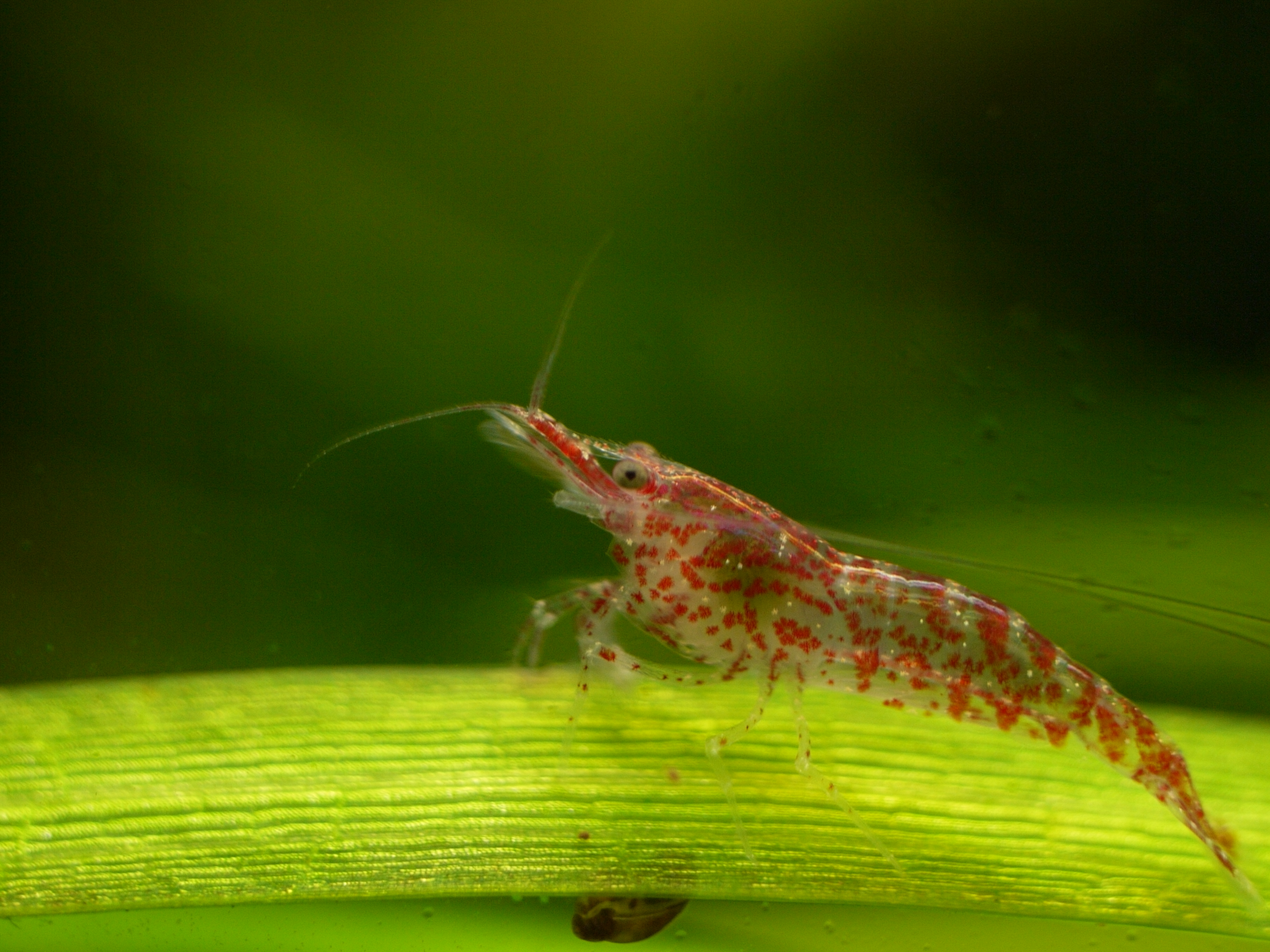All, Fish Facts
Introduction to Freshwater Crabs & Shrimps

Cherry Shrimp (Neocaridina davidi)
Native to the streams and pools of Taiwan, these hardy shrimp are a staple in freshwater invertebrates. They are active scavengers within the aquarium and are easy to breed. They grow to about 1½ inches and are one of the smallest tropical shrimps available. Bigger fish such as Angels are not suitable tankmates as they will predate on these critters if the aquarium is not large enough to support both.

Amano’s Shrimp (Caridina multidentata)
Named after the renowned aqua-scaper Takashi Amano, these efficient shrimps are excellent tank cleaners, converting all waste in their path to more managable ‘shrimp pellets’. They are also very tolerant to a wide range of water parameters once properly acclimatised which means that little change in ph is neccesary to introduce these shrimp (6.0-7.6). Over the course of 4 years Amano’s, if kept well, will reach a size of around 2 inches.

Glass Shrimp (Paleomonetes sp.)
Another easy-to-keep, inexpensive tank-tidier. Glass or ‘Ghost’ Shrimp are very active feeders and will stand off against fish if they feel their food supply is under threat but should still be kept with fish that are not big enough to eat them. They will tackle algae (like all shrimps), leftover foodstuff and plant detritus. At maximum size, Paleomonetes can get to 2 inches in length.

Raccoon Tiger Shrimp (Cardina cantonensis sp. Tiger)
Native to rivers of Southern China, Cantonensis is defined by dark vertical stripes covering their bodies with a long, lighter stripe follow their back. As to be expected, these shrimp prefer softer conditions and will breed better in a PH between 6.3-7.5. A relatively easy shrimp to take care of, Tiger Shrimp grow to a size of about 1.25 inches. Another omnivorous species, Raccoon Tigers will eat proteinous sinking food and algae wafers. Always remove what is not eaten within a few hours.

Red Clawed Crab (Perisesarma bidens)
Perisesarma are commonly found in mangrove swamps in Asia. Although they can be kept in fully aquatic tropical aquariums, they prefer a species-only paludarium of 50% land 50% brackish water more akin to their original habitat. They are an aggressive species are require a good amount of space and cover away from each other and other tank mates, a tank of 54l would happily support 3/4 crabs. They are the ultimate scavengers and will eat pretty much any food that is provided although a good balanced diet is important (fresh greens as well as protein rich sinking pellets). They will destroy any plants that you may try to grow in their environment. Substitute these for false yet realistic plastic plants. They are also great escape artists so a tight fitting lid with no large holes is crucial. Despite these conditions, these are incredibly interesting pets and when in a balanced group of males and females demonstrate fascinating social and territorial dynamics around each other.

Micro Spider Crab (Limnopilos naiyanetri)
A recently discovered species from a single river in Thailand, these crabs barely grow larger that a pencil eraser (body size). They are natural scavengers and can tolerate PH between 6.5-8. Aquarium should be stocked with lots of rocks for cover aswell as heavily planted areas including floating plants such as water fern and baby hyacinth for these crabs to dwell. They are not territorial and require passive tankmates such as neons and small rasboras. These have not yet been bred in captivity due to the difficulty in raising the young. They are omnivorous and will take spirulina based pellets aswell as sinking shrimp pellets to supplement moulting.

